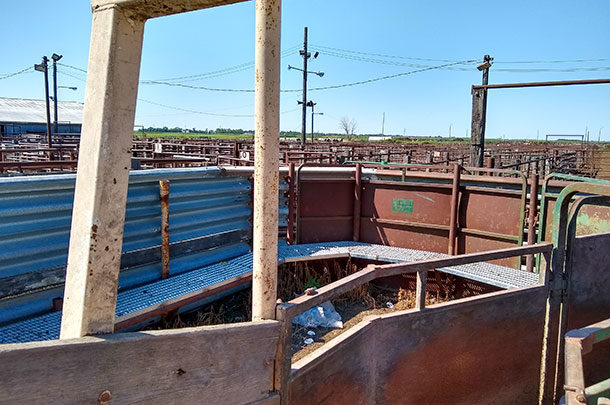Someone must do health inspections for cattle crossing state lines, read IDs, preg cows and sample the free cookies the local feed mill brings.
So how does a sale barn vet spend the day? Running constantly, processing cattle with the speed of a toddler hiding a piece of stolen candy just to stay ahead? Or sitting around playing cards, waiting for the post-sale beverages? Well, it’s kind of a mix of both.
You see, just like getting a parent to sign up for the after-prom committee, the vet has to wait to work cattle until someone asks him or her to do it. So at the start of the sale, if everything is ready to sell, then all there is to do is watch cattle sell or watch the back of your eyelids. I often opt for the latter.
But when a buyer wants some heifers guaranteed open, we spring into action to do that. The trouble is, when the first buyer asks to have heifers guaranteed, the next three buyers think, “Oh geez, that sounds like a good idea!” and ask to have theirs guaranteed too. Since work is on a first-come, first-serve basis, if you’re the fourth buyer in a row who asks to have heifers guaranteed, the vet has to work three pens before yours can be done. Might as well go get a cup of coffee at the café and wait.
Of course, usually at the same time everyone wants to load out, the out-of-state buyers need a health paper. What should be a simple, straightforward statement saying, “These cattle are healthy,” manages to be a muddled mess thanks to the varying requirements between states of destination. Cattle going to Iowa require different designations on the health paper than those going to Kansas. Bred cows need a permit number to go to Minnesota, but not when going to Nebraska. And, of course, the regulations change every so often because why not throw another wrench into the system?
Not all the work happens at loadout. Prior to the sale, bred cows must be pregged, ID’d and aged. Since the majority of cattle come in one to two days before, most of the work is done by sale day. But there’s always someone who brings in a few head the day of the sale. A few head are fine, but a couple hundred head would make things about as complicated as putting together one of those cheap grills that come in a box.
But all in all, being a sale barn vet isn’t a bad gig. You get to meet a lot of different people and see cattle from a large area. And, from my time at the barn, I’ve become a superb connoisseur of free cookies. ![]()
Jacob Geis is a veterinarian and blogger in Freeman, South Dakota.
PHOTO: All is quiet on an off day, but come sale day, this place will be the epicenter of excitement. Photo by Jacob Geis.







